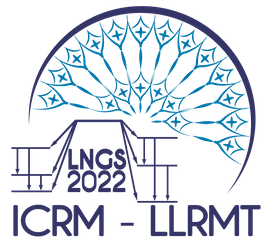Speaker
Description
ABSTRACT
An inescapable feature of life on Earth is exposure to ionizing radiation both from space and terrestrial sources. Deep Underground Laboratories (DUL) are research infrastructures built under a layer of rock able to greatly reduce the cosmic ray flux and provide the ideal environment for extremely low dose/dose rate investigations in many different disciplines such as physics and biology. The underground infrastructure of INFN-LNGS in Italy is one of the largest underground laboratories in the world in terms of installations, dimension, complexity and completeness. Starting from the 1990s, alongside astroparticle and neutrino physics experiments, radiobiology studies were performed with the aim of understanding the effects of environmental background radiation on the metabolism of living beings and contributing to the burning open question of the biological effects of very low dose/dose rate radiation and associated health risks.
For these studies, it is mandatory to characterize in detail the environmental and experimental conditions, particularly in terms of dose contributions to the biological model systems coming from the different components of the radiation field. Here we briefly introduce the RENOIR radiobiology experiment and present the dosimetric and spectroscopic characterization of the experimental set up and environments with a focus on the application of Low Background Radiation Detection Techniques and the approach used for radioactive background modulation.
To characterize the environmental low-LET radiation component, thermoluminescent dosimeter (TLD) and NaI scintillator measurements were carried out while the aboveground environmental neutron flux was measured using a DIAMON neutron spectrometer. An improved and efficient air ventilation system keeps the radon concentration underground low, equal to the surface concentration. It is also continuously monitored.
The intrinsic contribution of radioactivity in the experimental set up (caps, vials and culture medium) was measured by gamma-ray spectrometry with a high purity germanium detector and by Inductively Coupled Plasma Mass Spectrometry. Although the two techniques are very different from each other in terms of measured radionuclides (precursors vs daughters), sensitivity and time of measurement, the results are in good agreement with each other, especially for potassium which represents the major contribution.
One of the main objectives of the RENOIR experiment is to obtain information on the involvement of the low-LET component of the radiation field in biological model responses. With the help of simulations, special devices resembling Marinelli beakers have been constructed and filled with tuff to increase the gamma background radiation; to reduce (mitigate) the gamma background radiation we took advantage of a 10 cm thick lead shield, which was adapted to the requirements of the biological samples.

